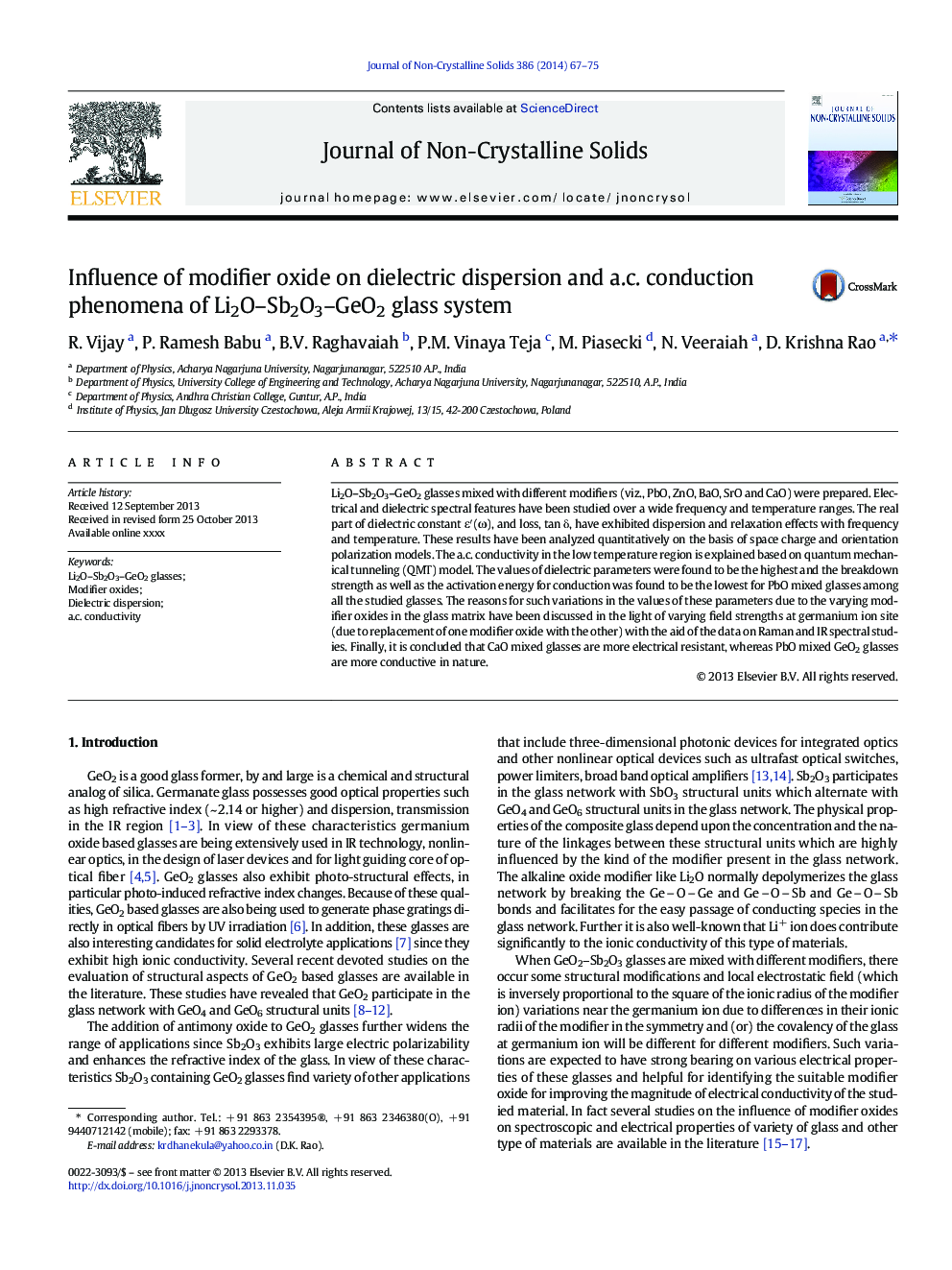| Article ID | Journal | Published Year | Pages | File Type |
|---|---|---|---|---|
| 7902502 | Journal of Non-Crystalline Solids | 2014 | 9 Pages |
Abstract
Li2O-Sb2O3-GeO2 glasses mixed with different modifiers (viz., PbO, ZnO, BaO, SrO and CaO) were prepared. Electrical and dielectric spectral features have been studied over a wide frequency and temperature ranges. The real part of dielectric constant εâ²(Ï), and loss, tan δ, have exhibited dispersion and relaxation effects with frequency and temperature. These results have been analyzed quantitatively on the basis of space charge and orientation polarization models. The a.c. conductivity in the low temperature region is explained based on quantum mechanical tunneling (QMT) model. The values of dielectric parameters were found to be the highest and the breakdown strength as well as the activation energy for conduction was found to be the lowest for PbO mixed glasses among all the studied glasses. The reasons for such variations in the values of these parameters due to the varying modifier oxides in the glass matrix have been discussed in the light of varying field strengths at germanium ion site (due to replacement of one modifier oxide with the other) with the aid of the data on Raman and IR spectral studies. Finally, it is concluded that CaO mixed glasses are more electrical resistant, whereas PbO mixed GeO2 glasses are more conductive in nature.
Related Topics
Physical Sciences and Engineering
Materials Science
Ceramics and Composites
Authors
R. Vijay, P. Ramesh Babu, B.V. Raghavaiah, P.M. Vinaya Teja, M. Piasecki, N. Veeraiah, D. Krishna Rao,
